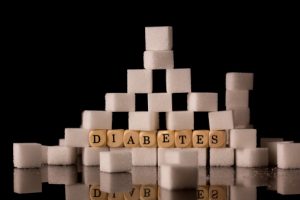 For years medical experts have watched the rate of type-2 diabetes and pre-diabetes rise, and although they are seeing the numbers stabilize, almost half of U.S. adults still struggle with the disease. This according to a study conducted by a team at Social and Scientific Systems Inc. in Silver Springs, Maryland.
For years medical experts have watched the rate of type-2 diabetes and pre-diabetes rise, and although they are seeing the numbers stabilize, almost half of U.S. adults still struggle with the disease. This according to a study conducted by a team at Social and Scientific Systems Inc. in Silver Springs, Maryland.
The Maryland group, which included epidemiologists, looked at National Health and Nutritional Survey data of over 23,000 adults from 1988 to 2010 to estimate diabetes trends. They examined another 2,781 from 2011 to 2012 in order to estimate recent prevalence of the disease. The information revealed that in 2011-2012 about 14 percent of the U.S. adult population had diabetes and 37 to 38 percent had pre-diabetes.
Advertisement
Type-2 diabetes and pre-diabetes puts a huge strain on the patient, healthcare providers and the healthcare system. In 2012 diabetes cost the U.S. 245-billion dollars. The largest portion of this – 43 percent – went to inpatient care, followed by prescriptions cost to treat complications associated with diabetes, which was just under 20 percent.
The study also revealed that the number of undiagnosed cases of diabetes was high; around 36 percent. The researchers were able to narrow down the numbers and realized that more than half of Asian Americans and close to half of Hispanic Americans with diabetes are undiagnosed. The experts say the difference between Asian Americans and other groups that were studied is body mass index (BMI). The data showed that the average BMI for all Asian Americans was under 25, while the average for the U.S. population overall was just below 29. A BMI of 30 or greater is considered obese. The American Diabetes Association suggests that Asian Americans be tested for diabetes at a BMI of 23 or higher, a lower threshold than the general U.S. population.
Although the number of diabetes and pre-diabetes cases still sounds high, the fact that the numbers have leveled off in recent years is seen as a positive sign. The authors of the study believe that the numbers are consistent with obesity trends leveling off in the United States and offer hope that people are listening to the warnings. In 2013 the American Medical Association officially recognized obesity as a disease. Obesity is considered a major contributing factor when it comes to diabetes. Additionally, the American Public Health Association has stepped up its efforts to reinforce strong, healthy food policies over the last few years.
Facts about diabetes
 Statistics show that just over 29 million Americans have diabetes. In 2012, (the latest numbers available) an estimated 86 million people had pre-diabetes. If a person has type-2 diabetes their body does not use insulin properly. At first the pancreas makes extra insulin to make up for it; however, it can’t keep this up and isn’t able to make enough insulin to keep blood glucose at a normal level. Right away the cells become starved for energy and high glucose levels can start to damage the eyes, the heart, and the kidneys.
Statistics show that just over 29 million Americans have diabetes. In 2012, (the latest numbers available) an estimated 86 million people had pre-diabetes. If a person has type-2 diabetes their body does not use insulin properly. At first the pancreas makes extra insulin to make up for it; however, it can’t keep this up and isn’t able to make enough insulin to keep blood glucose at a normal level. Right away the cells become starved for energy and high glucose levels can start to damage the eyes, the heart, and the kidneys.
The American diet has a lot to do with the rate of diabetes. Since the U.S. is one of the most multicultural countries in the world, we have to take into consideration foods from other cultures and the impact on diet and disease. For instance, Americans from India, Mexico and China, and Native and African Americans, all have a high incidence of type-2 diabetes. They also have unique food preferences.
If we look at the African American diet as an example, it often includes starchy vegetables like dried beans, or beans with pork. Grains such as grits, cornbread, biscuits, muffins and macaroni are popular, too. When it comes to meats, they are often breaded or fried and sweet milk and buttermilk are used often in many recipes.
For African Americans, lowering the amount of cholesterol, fat and sodium while focusing on fresh fruit, fresh vegetables and complex carbohydrates will help reduce the risk of diabetes and complications associated with the disease.
Health experts find that helping people modify existing recipes works best. It is often successful when the recipe uses the same spices (so the taste remains similar), but the fatty meat is exchanged for lean, fried vegetables are baked and a grain like quinoa is used instead of biscuits or pasta. A study at the diabetes clinic of Grady Memorial Hospital in Atlanta shows that the biggest reason people don’t follow food recommendations is that the diet isn’t familiar to them.
Causes and risk factors of pre-diabetes
 Genetics do play a role in pre-diabetes, but the exact cause of pre-diabetes is not known. What we do know is that people who have pre-diabetes are not processing glucose properly. For some reason, sugar builds up in the bloodstream instead of fueling cells that give us energy.
Genetics do play a role in pre-diabetes, but the exact cause of pre-diabetes is not known. What we do know is that people who have pre-diabetes are not processing glucose properly. For some reason, sugar builds up in the bloodstream instead of fueling cells that give us energy.
While pre-diabetes causes can be hard to pinpoint, we can tell you that science has determined that most of the glucose in our bodies comes from the food we eat. When we are digesting, sugar enters our bloodstream and with help from insulin, it enters the body’s cells where it is used to give us energy.
When it comes to risk factors, both pre-diabetes and diabetes are much the same. There is a long list of influences…
- Being overweight
- Being inactive
- Having a large waist size
- Race (African Americans, Hispanics, Native Americans, Asian Americans and Pacific Islanders are more likely to develop pre-diabetes)
- Having experienced gestational diabetes
- Suffering from sleep issues
- Having high blood pressure
- Having low levels of good cholesterol (HDL)
- Experiencing high levels of triglycerides (a type of fat in blood)
- Having Polycystic Ovary Syndrome
- Aging (pre-diabetes tends to increase after age 45)
Symptoms of pre-diabetes
In many cases pre-diabetes symptoms are non-existent, although there is one sign that you might be at risk for type-2 diabetes. Some people get darkened skin on certain parts of their body. The most common areas include knuckles, knees, elbows, neck and armpits. There are a few signs that you may have moved from pre-diabetes into diabetes. Those signs include fatigue, increased thirst, frequent urination and blurred vision.
You should see a doctor if your body mass index is above 25, you have a history of diabetes in your family, you suffer from high blood pressure, your HDL cholesterol is below 35 milligrams per deciliter (mg/dL) (0.9 millimoles per liter, or mmol/L) or your triglyceride level is above 250 mg/dL (2.83 mmol/L).
Preventing pre-diabetes
 Even if you have a family history of diabetes, studies show that having a healthy diet is a good pre-diabetes prevention approach. It’s also important to remember that it’s not just what you eat, but also how much that can make a difference in whether or not you get diabetes. Eating more foods that are boiled as opposed to fried, cutting back on the amount of butter used in cooking, as well as eating more fish, chicken and lean beef, will also all be helpful in keeping the disease at bay.
Even if you have a family history of diabetes, studies show that having a healthy diet is a good pre-diabetes prevention approach. It’s also important to remember that it’s not just what you eat, but also how much that can make a difference in whether or not you get diabetes. Eating more foods that are boiled as opposed to fried, cutting back on the amount of butter used in cooking, as well as eating more fish, chicken and lean beef, will also all be helpful in keeping the disease at bay.
Pre-diabetes prevention should also include exercise. It helps us use insulin that we produce to convert food we eat into energy. This keeps our blood glucose lower. So, if you have a piece of cake or pie for dessert, follow it up by going for a brisk walk or a bike ride.
Pre-diabetes can increase your chances of getting heart disease or having a stroke, but the good news is that you do have the power to lower those risks. With weight control, regular exercise and a nutritious diet, there is no reason why you shouldn’t be able to turn things around.
If you suspect that you might have diabetes, don’t shy away from getting help. Tests to determine whether or not you do have the disease are not that difficult to go through. In most cases, to confirm the diagnosis of type-2 diabetes, a fasting plasma glucose test will be conducted. According to the American Diabetes Association, this is the preferred testing method because it is quick, easy and not expensive. Before taking the test, people are not allowed to eat for up to eight hours. During the test, blood is drawn and then sent to a lab for analysis.
Normal blood sugar (fasting glucose) is between 70 and 100 milligrams per deciliter for those who do not have diabetes. A diagnosis of diabetes is made when two separate tests show that your fasting blood glucose level is greater or equal to 126 mg/dL. If you have risk factors for diabetes or symptoms, your doctor just might do a glucose tolerance test to make sure you don’t have the disease. This oral glucose test measures the body’s ability to use sugar. Some people have normal fasting blood sugar readings, but their blood sugar rises when they eat. These people have what is called impaired glucose intolerance. If their blood sugar is high enough, they could also be diagnosed with diabetes.
Related reading:
Heart attack risk is six times higher among diabetic women smokers
According to recent research, women (under the age of 45) who smoke while suffering from diabetes are six times more likely to experience a myocardial infarction (MI). A study uncovered that… Continue reading…
Advertisement
Eat like this to improve post-meal sugar
Roughly 29-million Americans have diabetes. Specifically, the prevalence of diabetes in seniors remains high, with those over 65 years of age represent 25.9% of that statistic. Sugar intake should be kept to a minimum and diabetics should make healthy foods choice… Continue reading…
Sources:
http://www.medicalnewstoday.com/articles/299143.php
http://www.nih.gov/news/health/sep2015/niddk-08.htm
https://www.apha.org/policies-and-advocacy/public-health-policy-statements/policy-database/2014/07/29/12/34/toward-a-healthy-sustainable-food-system`
http://clinical.diabetesjournals.org/content/22/4/190.full
http://www.diabetes.org/diabetes-basics/statistics/
http://www.mayoclinic.org/diseases-conditions/prediabetes/basics/causes/con-20024420
http://www.mayoclinic.org/diseases-conditions/prediabetes/basics/risk-factors/con-20024420
http://www.mayoclinic.org/diseases-conditions/prediabetes/basics/symptoms/con-20024420
http://www.mayoclinic.org/diseases-conditions/prediabetes/basics/prevention/con-20024420
http://www.joslin.org/info/what_is_pre_diabetes.html
http://www.webmd.com/diabetes/guide/what-is-prediabetes-or-borderline-diabetes
http://www.webmd.com/diabetes/guide/diagnosing-type-2-diabetes
